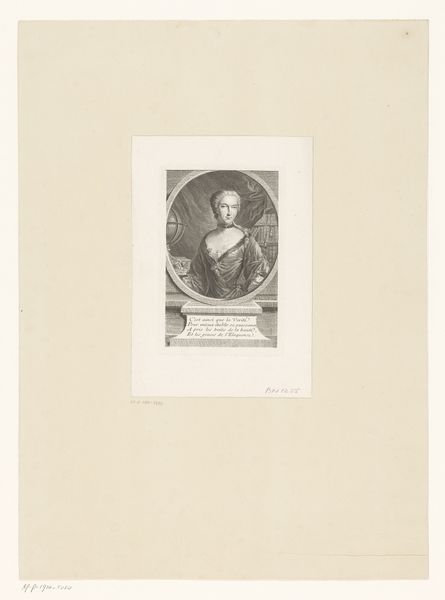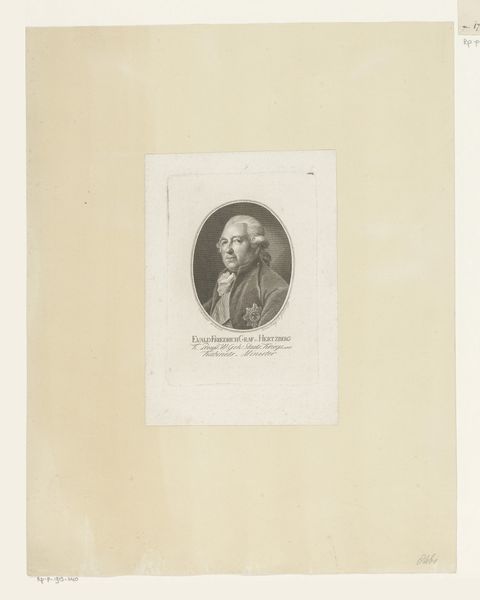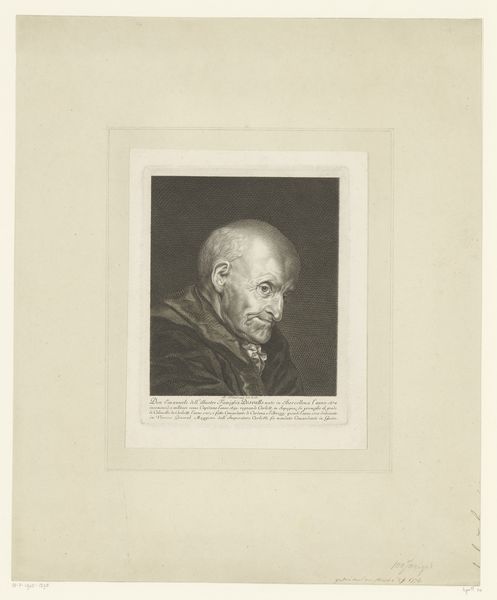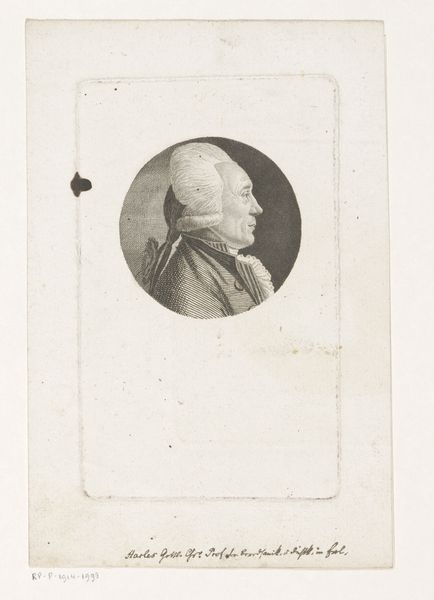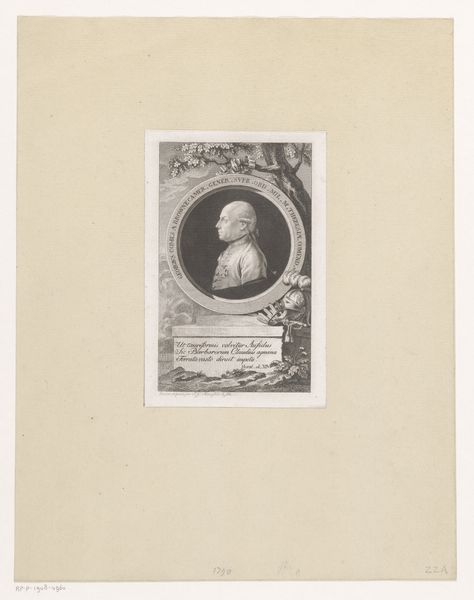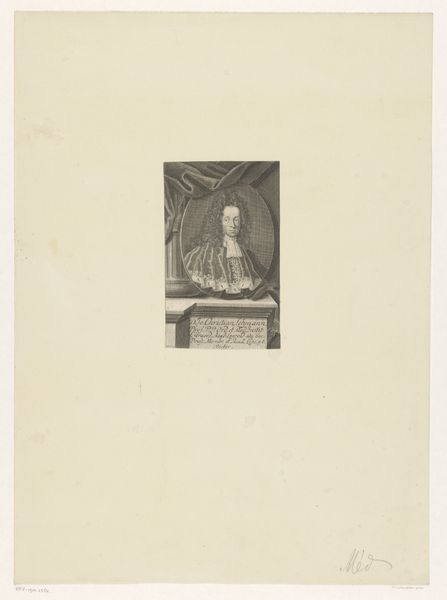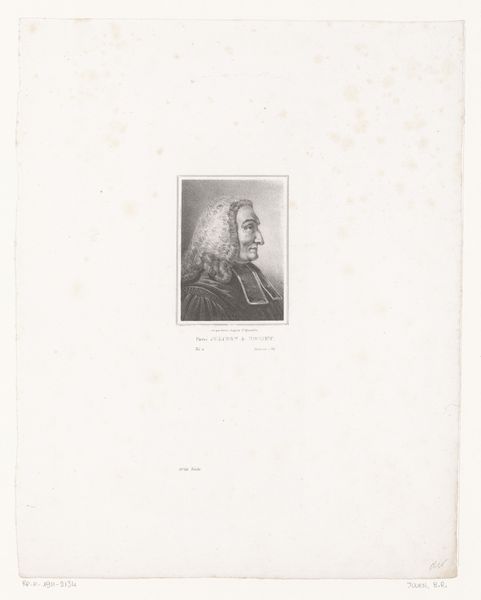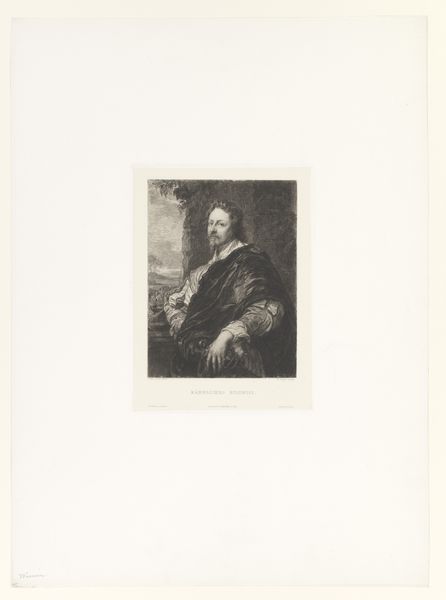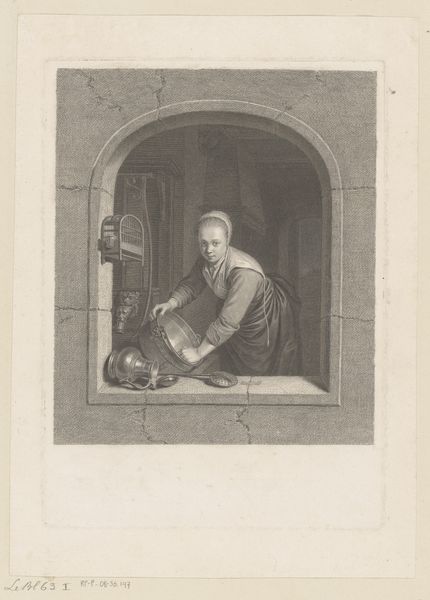
print, etching
#
portrait
# print
#
etching
#
history-painting
#
academic-art
Dimensions: height 101 mm, width 69 mm
Copyright: Rijks Museum: Open Domain
Editor: Here we have an 18th-century etching, "Portret van een onbekend man met hoed," or "Portrait of an unknown man with a hat." It’s striking how detailed the textures are, especially given the limitations of printmaking at the time. What can you tell me about it? Curator: Well, let's consider the materiality of this work. It's an etching, so we're talking about acid, metal plates, ink, and paper. The process itself dictated the aesthetic – the fine lines, the ability to create multiple impressions. What does the choice of printmaking over, say, painting, suggest about the intended audience and purpose of this image? Was it intended for a broader, perhaps less wealthy, public? Editor: That makes sense. I hadn't thought about it in terms of accessibility. Maybe it was about distributing images more widely? Curator: Precisely. Think about the labour involved too. An etcher was a skilled artisan, part of a specific economic system. Their labour was tied to reproducing and disseminating images, playing a role in shaping perceptions and narratives. Are we looking at portraiture as a means of documenting the wealthy and influential, or something more tied to production and circulation? Editor: It's interesting to think of it that way, rather than just as a piece of art on display. I’m curious, why etching and not another form of printmaking at the time? Curator: Each technique offered different possibilities and involved varying levels of skill and cost. Etching allowed for finer lines and more tonal variation than, say, woodcuts. Understanding that choice helps us understand the etcher's specific intentions and the perceived value of the image they were creating. We see that in this work. What are the implications? Editor: That’s fascinating. So by focusing on the materials and process, we can understand not just the image itself, but also the context of its creation and consumption? Curator: Exactly. By digging into the materiality, we're unearthing the social and economic forces that shaped this image, a nice turn from an initial, more formal approach.
Comments
No comments
Be the first to comment and join the conversation on the ultimate creative platform.

